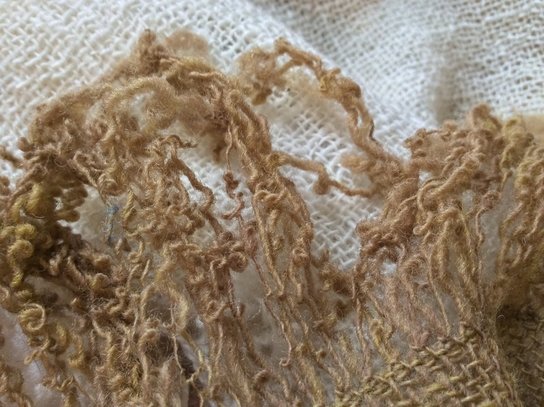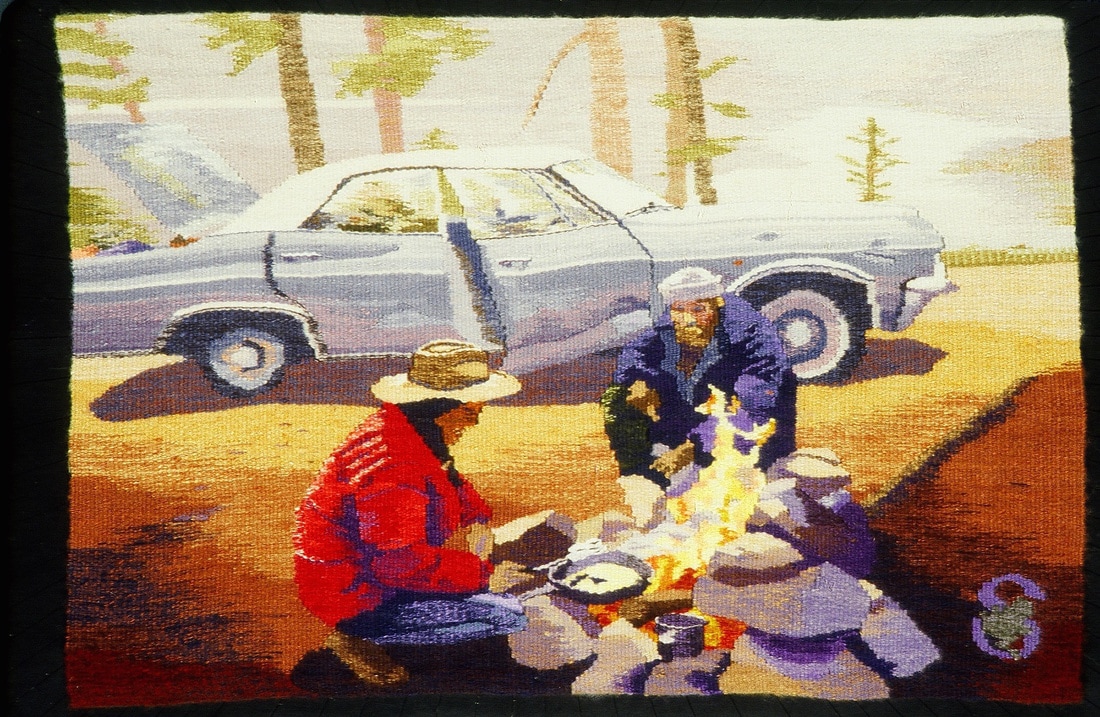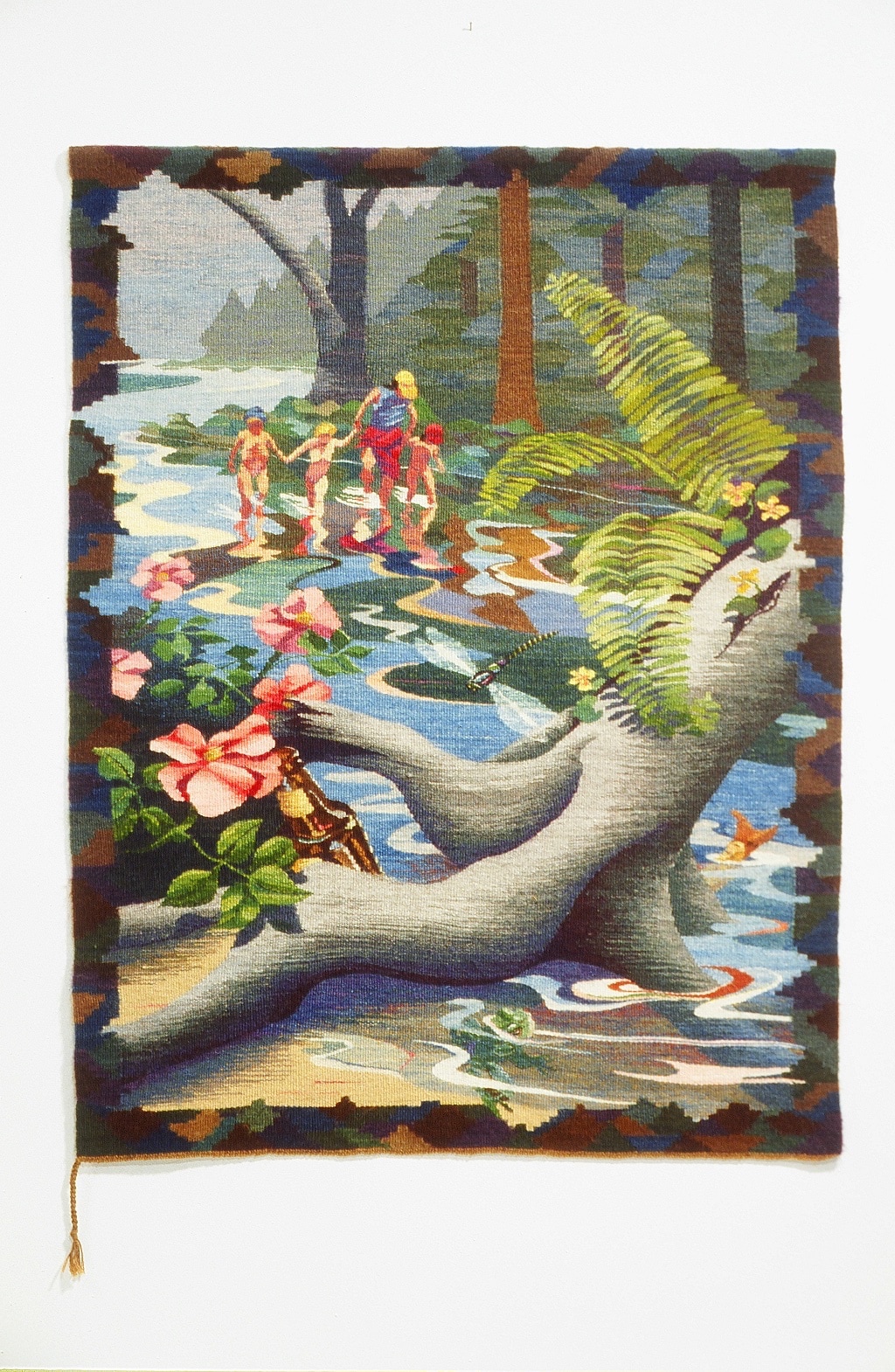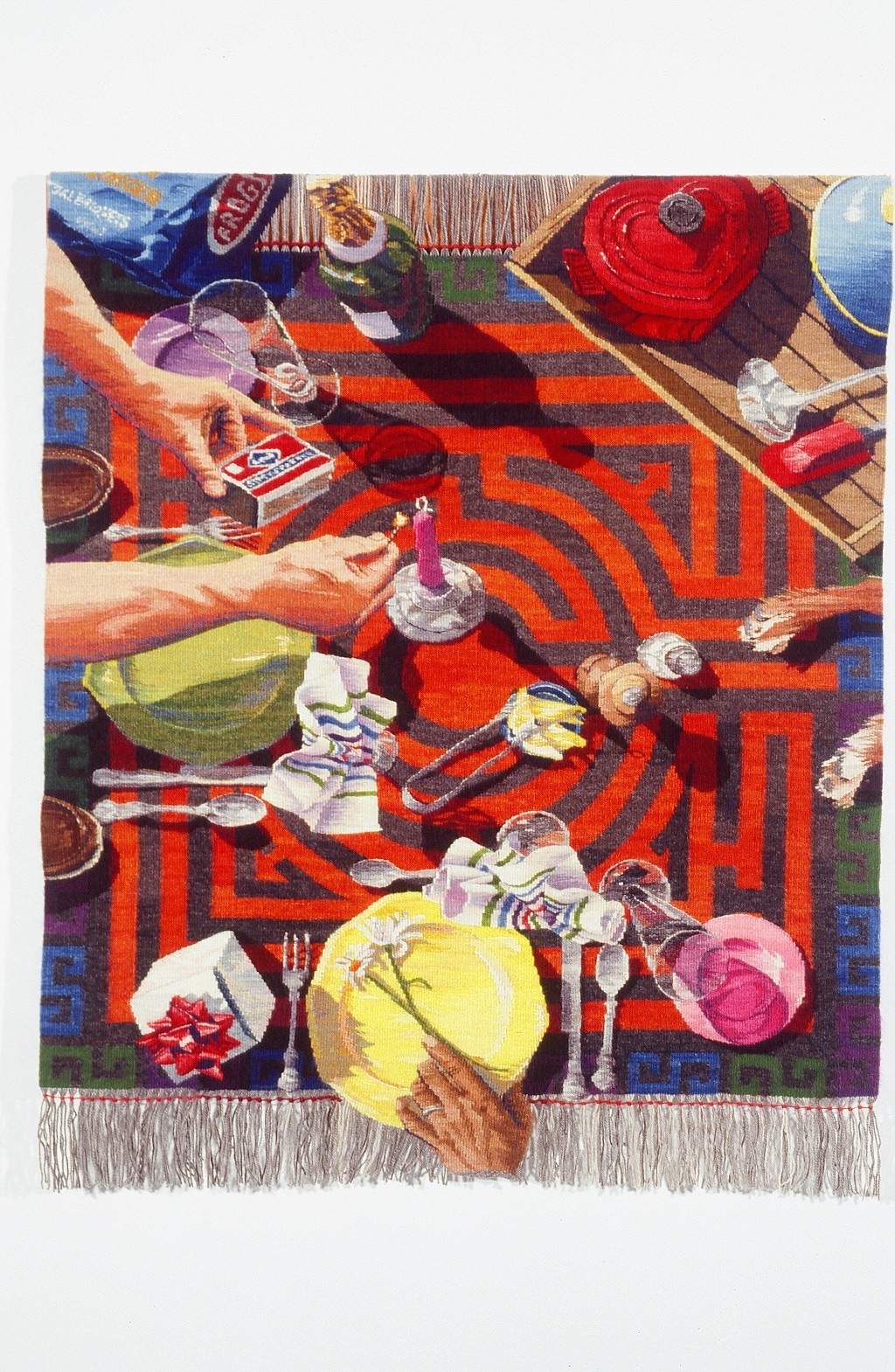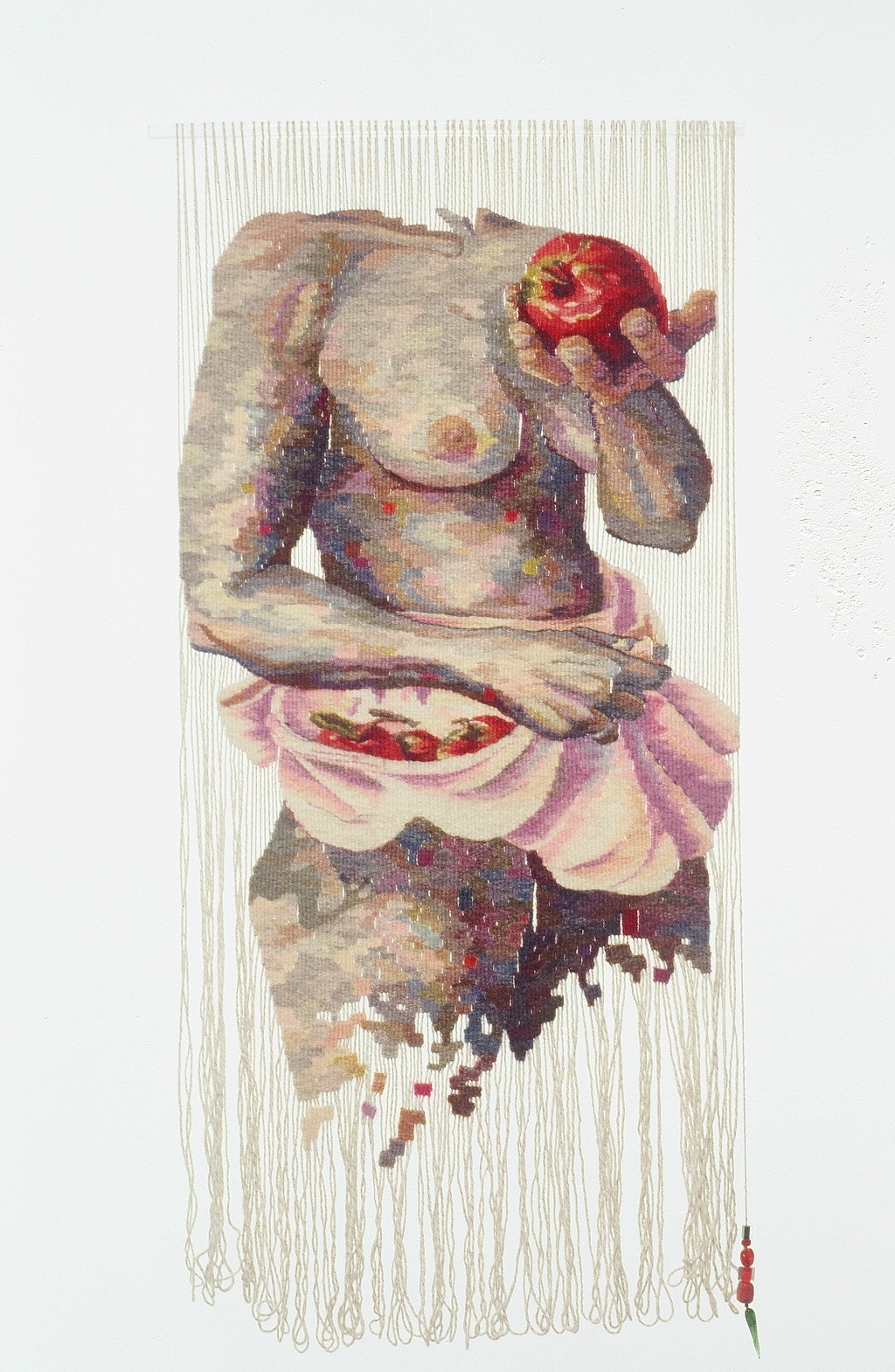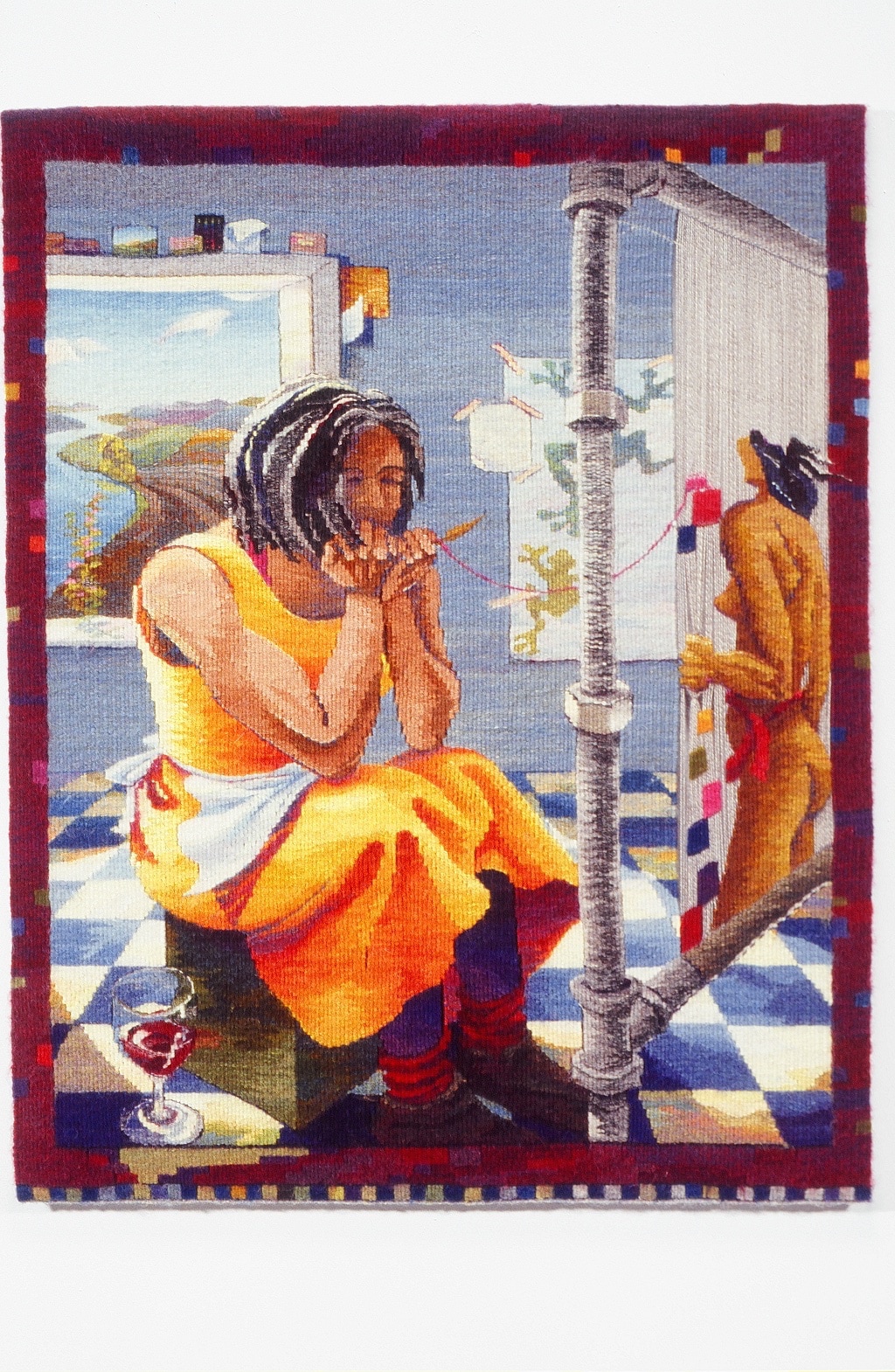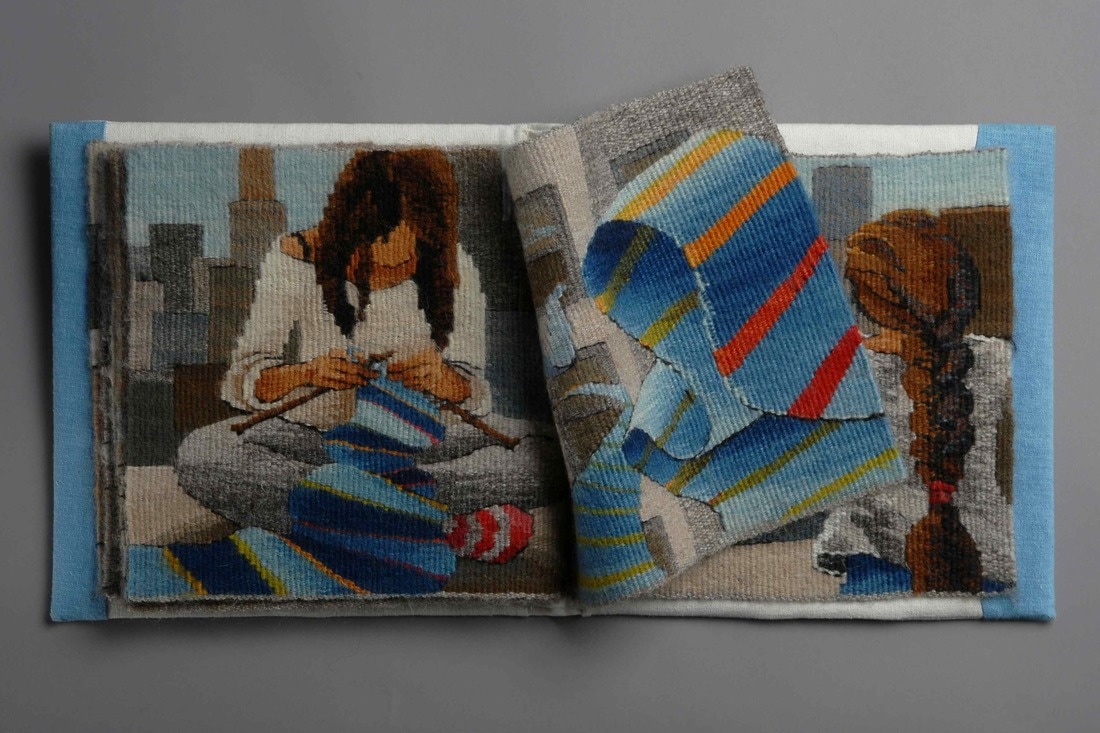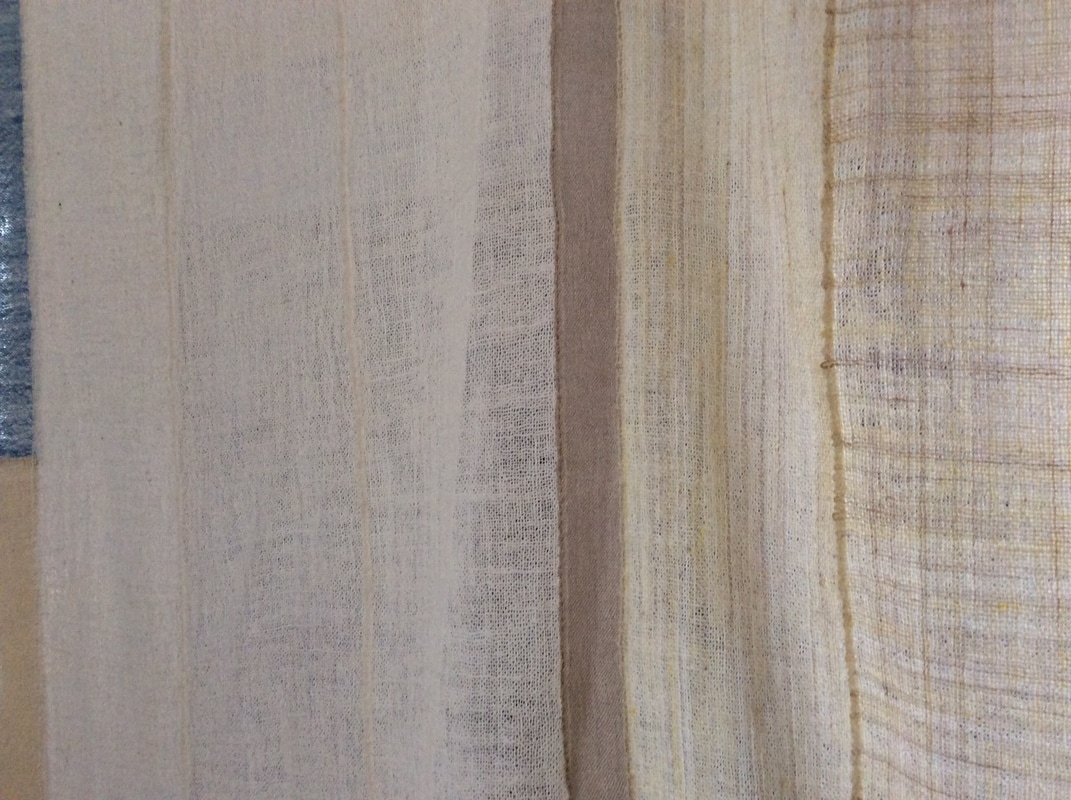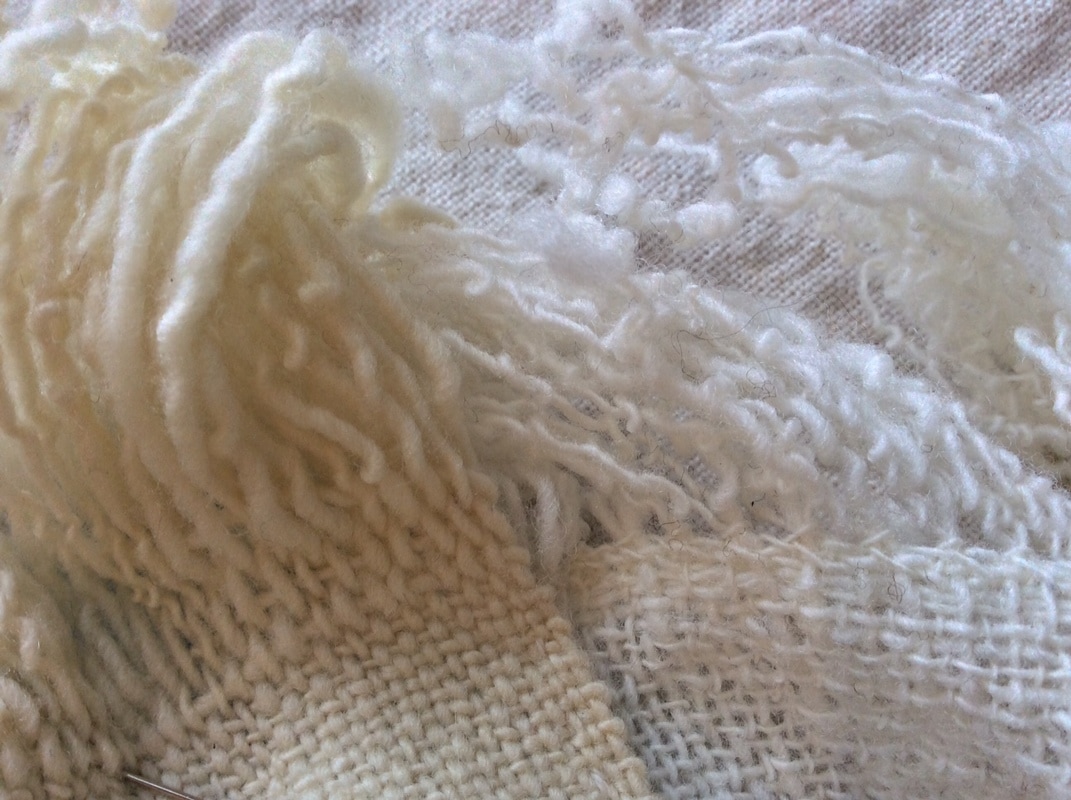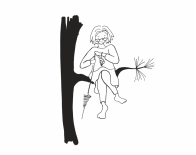It seemed a simple goal.
But Shirley Medsker, Professor of Textiles at the University of Idaho and reigning monarch of the massive light and loom filled expanse on the the third floor of the College of Home Economics (now family and Consumer Sciences) building, made it clear that quite a few scarves and placemats and dishtowels would have to go on and come off various looms before I would be ready to think about yardage.
And every scarf and dishtowel and placemat and baby blanket and shawl had annoying warp ends that needed to be managed in some way or other.
We (Shirley's students), could hide them with a hem or elegantly emphasize them with hemstitching.
We could braid or twist the warps into sinuous clumps
or experiment with knotting techniques from around the world. None really appealed.
Warping was fine. I liked to warp the looms. But this business of dealing with the ends -- Ugh. Yet there they were, on every single warp.
Obligingly (I was an anxious student with ideas about going to Vet School), I tried many of the suggested methods but never quite got over my knitterly affection for a clean selvedge.
Perhaps weaving wasn't really for me after all.
needless to say, Shirley was right and I was sunk. Weaving images was just so interesting.
Joanne taught us to weave from the front, drop the weft tails to the back and use linen warp as in the Scandinavian tradition, so this was what I did for the next few years.
Eventually, however, dealing with the warp at the end of each project made me crazy once again. The Linen was lovely to work with and smelled delicious, but all that effort at the end of a tapestry to hide the cut ends was horrid. Tacking the strands to the back, weaving hems to hide them (always unsightly and bulky), or otherwise managing them in some fashion seemed both makeshift and un-worthy of the textile I'd just woven.
And I won't even go into my discomfort with all those weft ends dangling at the back--a different kind of seemingly unavoidable fringe--that wore away at my affection for what I was making.
Perhaps tapestry wasn't really for me after all.
1. Start with a wool warp (hand spun because who would trust anyone else's warp and anyway where would I buy it?), and
2. Weave in in all the ends while building shapes (wool on wool holds together so well).
Perfect. Two problems down.
Then from Peter Collingwood's book The Techniques of Rug Weaving, I learned a twined edging that leaves a clean edge with just a little braid at the corner as a reminder of the clothness of the thing and entirely eliminates those unsightly and bulgy hems I hated so much.
This kept me quiet for the next five years/ fifteen or so tapestries.
In my case, I think I was tipped into a new direction by one too many people complimenting my work with some variation of the phrase: "It's almost like a painting!"
And though I know they meant it kindly, this phrase began to feel like sandpaper on my skin.
"Thank you so much," I would invariably say.
But inside I began to fume: I'm not a painter. This is not a painting. See that cute little braid in the corner? See how I have not tortured it by stretching it permanently on a frame? See how nicely it moves and flows when you walk by? See how I can roll it up and tuck it under my arm or use it as an extra blanket when shivering on a cot in a motel? See how it looks good in all light levels? See how it absorbs sound? Tell you what. I'll weave a series of pieces where the fringe is essential to the composition--now, just try to find painted fringe that looks as good as the real thing. I dare you! You could paint a better match box, for sure, but not the fringe.
During that time I also wove a lot of nudes, though perhaps this was merely a parallel evolution.
At any rate, I worked this way on and off for the next three years until new ideas took hold, as new ideas invariably will.
The lack of warp ends that had to be 'dealt with' in one way or another, led me to fall in love with the physicality of the objects I was making in a whole new way.
Their distinct edges and clean backs have, for me, a visceral integrity I find difficult to articulate, but which has allowed me to get the work off the wall and into the air where the cloth can interact with the world (mobiles, books etc) in what feels to me a truly textileish way.
lengths of cloth I am now sewing into larger swaths,
lengths of cloth every one of which
has fringe....
I wonder how this will turn out...
